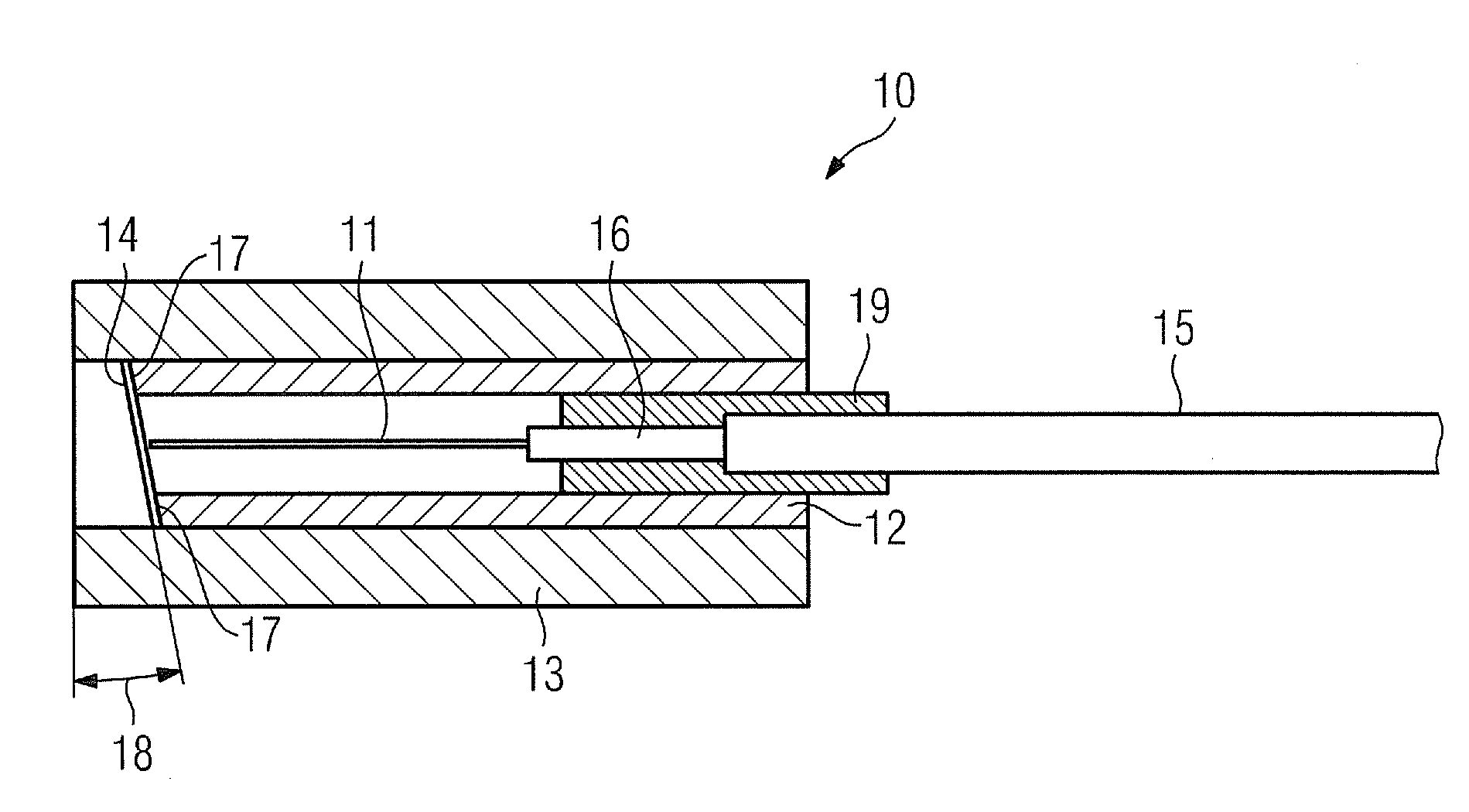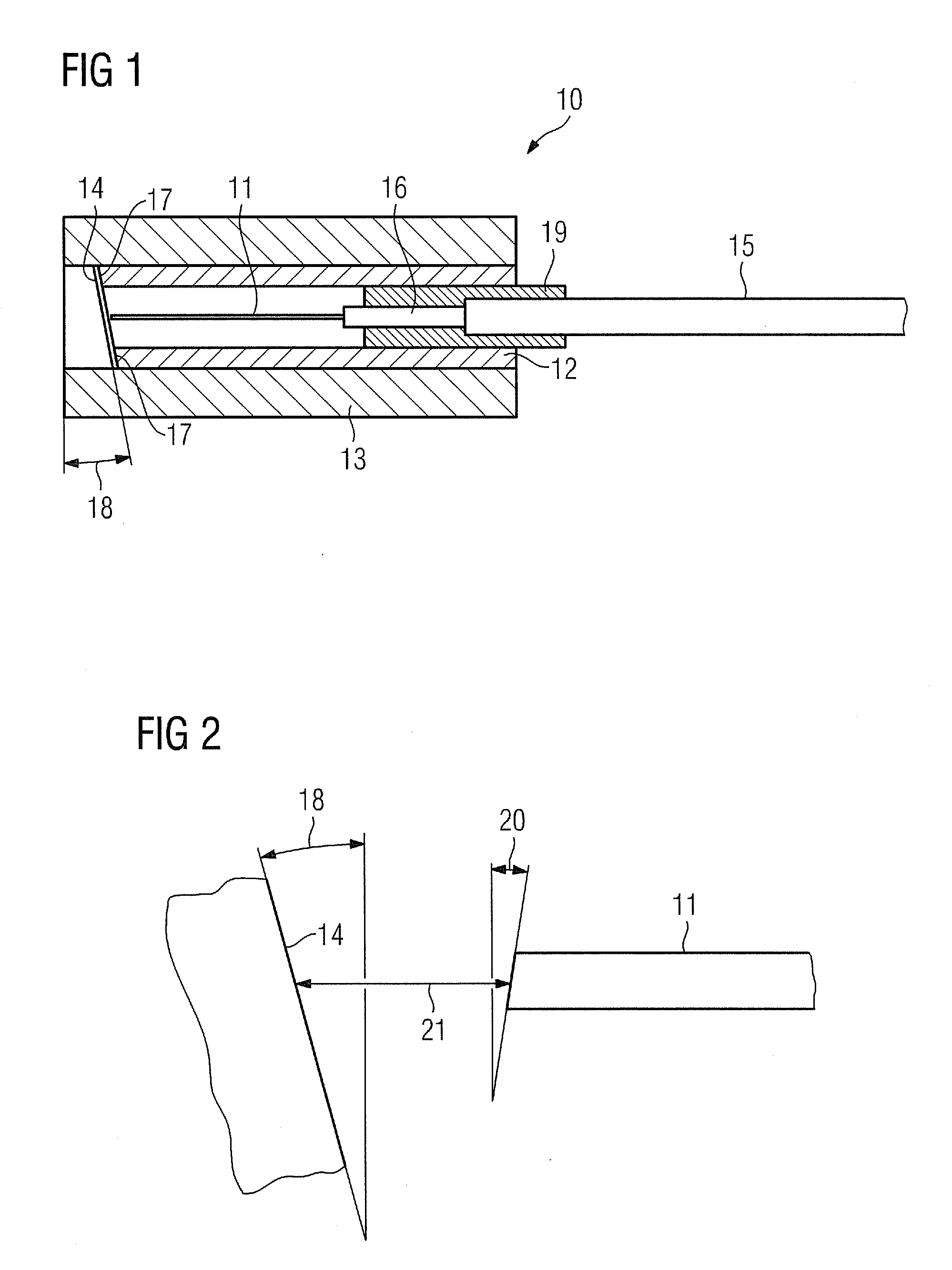Fiber-Optic Vibration Sensor
a fiber-optic, vibration sensor technology, applied in the direction of instruments, measurement devices, using wave/particle radiation means, etc., can solve the problems of destroying the generator, affecting the operation of the generator, so as to achieve the greatest possible fiber length, simplify the design of the vibration sensor, and the effect of high sensitivity
- Summary
- Abstract
- Description
- Claims
- Application Information
AI Technical Summary
Benefits of technology
Problems solved by technology
Method used
Image
Examples
Embodiment Construction
[0017]The fiber-optic vibration sensor 10 shown in FIG. 1 includes as an essential element a glass fiber 11. This is embodied as a multimode fiber 62 / 125 μm. A 16 mm-long section of the glass fiber 11 is freestanding. The glass fiber 11 ends at the end of said section. Immediately after the freestanding section the glass fiber 11 is fixed in a guide element 16. Further on from this the glass fiber 11 is routed loosely in a 3.7 mm-diameter Teflon tube 15.
[0018]The end of the Teflon tube 15 is enclosed together with the guide element 16 by a first sheath 19. A second sheath 12 is provided around the first sheath 19. The second sheath 12 extends from the region of the first sheath beyond the freestanding section of the glass fiber 11. On the end face, i.e. at the point where the glass fiber 11 ends, the second sheath 12 is terminated with an end beveled at an angle of 11°, which in the case of the cylinder-shaped second sheath 12 reveals itself in a circular-ring-shaped, beveled end 17...
PUM
 Login to View More
Login to View More Abstract
Description
Claims
Application Information
 Login to View More
Login to View More - R&D
- Intellectual Property
- Life Sciences
- Materials
- Tech Scout
- Unparalleled Data Quality
- Higher Quality Content
- 60% Fewer Hallucinations
Browse by: Latest US Patents, China's latest patents, Technical Efficacy Thesaurus, Application Domain, Technology Topic, Popular Technical Reports.
© 2025 PatSnap. All rights reserved.Legal|Privacy policy|Modern Slavery Act Transparency Statement|Sitemap|About US| Contact US: help@patsnap.com


